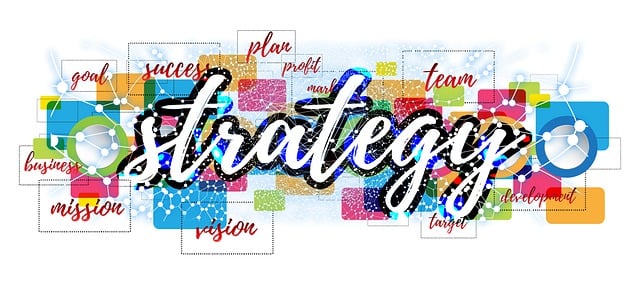Managing an RV repair team faces challenges like complex task scheduling, parts tracking, technical diversity, and maintaining service standards while controlling costs. AI systems automate repetitive tasks, enhance communication with real-time updates, and leverage predictive analytics to anticipate maintenance needs. This streamlines processes, frees technician time for complex repairs, and improves overall efficiency in RV repair management. Implementing AI involves a strategic five-step guide: assess current operations, choose relevant AI tools, seamlessly integrate them with existing systems, provide training, and monitor performance. This approach optimizes RV repair operations, leading to enhanced efficiency, cost savings, and improved customer satisfaction through AI systems for streamlining RV repair operations.
In today’s competitive market, efficient RV repair team management is key to success. However, navigating complex schedules, inventory, and labor challenges can be daunting. AI systems offer a transformative solution, promising to optimize and streamline RV repair operations like never before. This article explores the potential of AI in addressing these challenges, providing a comprehensive guide on how to implement AI for a more productive and profitable RV repair business. Discover how AI can revolutionize your workflow, from scheduling and diagnostics to parts management and customer service.
- Understanding the Challenges of RV Repair Management
- How AI Can Optimize and Streamline RV Repair Operations
- Implementing AI Systems: A Step-by-Step Guide for RV Repair Teams
Understanding the Challenges of RV Repair Management

Managing an RV repair team comes with its unique set of challenges. Traditional management methods often struggle to keep up with the demanding nature of the industry, especially as RVs continue to evolve in complexity. The process can be cumbersome, involving multiple tasks such as scheduling appointments, tracking parts and inventory, overseeing a diverse range of technical skills, and ensuring efficient communication among team members. This labyrinthine operation is further complicated by the need to maintain high standards of service and safety while keeping costs manageable.
AI systems are emerging as game-changers in streamlining RV repair operations. By leveraging machine learning algorithms and data analytics, these systems can automate repetitive tasks like scheduling and inventory management, freeing up valuable time for technicians to focus on complex repairs. AI can also enhance communication by providing real-time updates and insights into project progress, ensuring that every team member is aligned with the latest information. Moreover, predictive analytics capabilities can anticipate maintenance needs, helping to prevent breakdowns and reduce downtime.
How AI Can Optimize and Streamline RV Repair Operations

Artificial Intelligence (AI) has the potential to revolutionize RV repair operations by optimizing and streamlining processes, ultimately improving efficiency and productivity. AI systems can analyze vast amounts of data from past repairs, maintenance records, and industry trends to predict common issues and suggest proactive solutions. This predictive capability allows repair teams to prepare in advance, reducing unexpected downtime and enhancing customer satisfaction.
Furthermore, AI-powered automation can handle repetitive tasks, such as scheduling, inventory management, and even basic diagnostic checks. By automating these processes, human resources can be redirected to more complex repairs and strategic planning. This not only accelerates the repair process but also ensures that skilled technicians focus on tasks that require their expertise, leading to higher-quality work and faster turnaround times.
Implementing AI Systems: A Step-by-Step Guide for RV Repair Teams

Implementing AI Systems: A Step-by-Step Guide for RV Repair Teams
1. Assess Current Operations: Begin by evaluating your current RV repair processes, identifying pain points, and understanding where AI can add the most value. This might involve analyzing task allocation, inventory management, or scheduling efficiency.
2. Choose Relevant AI Tools: Based on your assessment, select AI tools tailored to streamline specific operations. For instance, natural language processing (NLP) chatbots can handle customer inquiries and provide initial diagnostic support. Computer vision algorithms can aid in parts identification and damage assessment. Automated scheduling software can optimize workforce allocation and reduce scheduling bottlenecks.
3. Integrate with Existing Systems: Ensure the chosen AI tools seamlessly integrate with your existing RV repair management system, ERP, or CRM platforms to avoid data silos. This integration allows for a unified workflow, enabling real-time tracking and informed decision-making.
4. Provide Training and Support: Equip your team with the necessary training to use new AI systems effectively. This could involve hands-on training sessions, tutorials, and ongoing support from vendors or internal IT teams to address any issues that arise during implementation.
5. Monitor and Optimize: After deployment, closely monitor the performance of AI systems, tracking key metrics such as efficiency gains, cost savings, and customer satisfaction. Regularly review and optimize the algorithms based on feedback and changing operational needs.
AI systems offer a transformative opportunity for RV repair teams to optimize their management and operations. By leveraging machine learning and natural language processing, these technologies can streamline scheduling, inventory management, and diagnostic processes, significantly reducing downtime and enhancing overall efficiency. Implementing AI doesn’t have to be complex; following a structured guide ensures a smooth transition, allowing repair teams to focus on delivering exceptional service with improved productivity and cost savings. Embrace the future of RV repairs with AI systems for enhanced team management and streamlined operations.
